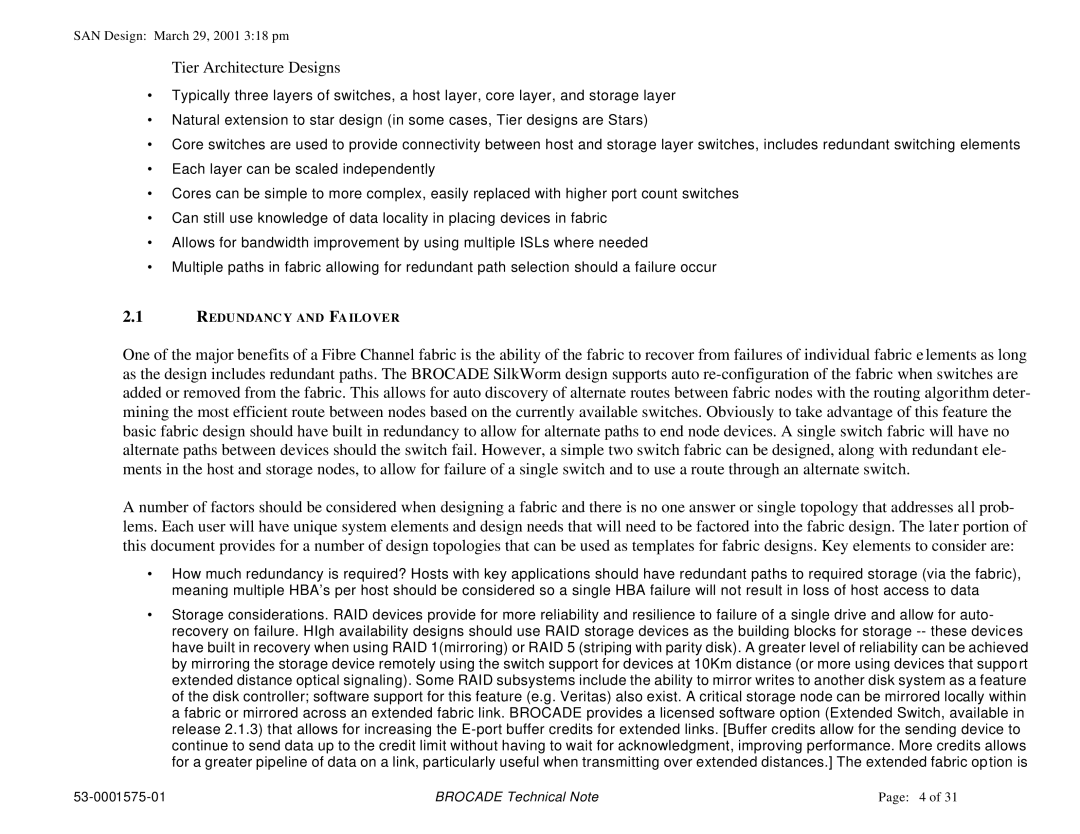SAN Design: March 29, 2001 3:18 pm
Tier Architecture Designs
•Typically three layers of switches, a host layer, core layer, and storage layer
•Natural extension to star design (in some cases, Tier designs are Stars)
•Core switches are used to provide connectivity between host and storage layer switches, includes redundant switching elements
•Each layer can be scaled independently
•Cores can be simple to more complex, easily replaced with higher port count switches
•Can still use knowledge of data locality in placing devices in fabric
•Allows for bandwidth improvement by using multiple ISLs where needed
•Multiple paths in fabric allowing for redundant path selection should a failure occur
2.1REDU NDANC Y AND FA ILOVER
One of the major benefits of a Fibre Channel fabric is the ability of the fabric to recover from failures of individual fabric e lements as long as the design includes redundant paths. The BROCADE SilkWorm design supports auto
A number of factors should be considered when designing a fabric and there is no one answer or single topology that addresses all prob- lems. Each user will have unique system elements and design needs that will need to be factored into the fabric design. The later portion of this document provides for a number of design topologies that can be used as templates for fabric designs. Key elements to consider are:
•How much redundancy is required? Hosts with key applications should have redundant paths to required storage (via the fabric), meaning multiple HBA’s per host should be considered so a single HBA failure will not result in loss of host access to data
•Storage considerations. RAID devices provide for more reliability and resilience to failure of a single drive and allow for auto- recovery on failure. HIgh availability designs should use RAID storage devices as the building blocks for storage
BROCADE Technical Note | Page: 4 of 31 |
